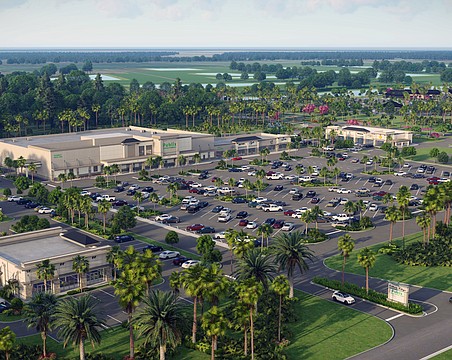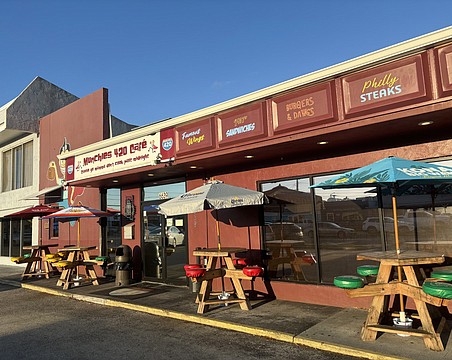WAYNE RUBEN
President
WMR Consulting LLC
Sarasota
I think 2018 and 2019 are shaping up to be the years in which destination dining, as I call it, will really start to shine. Landlords are losing retailers to online shopping and it’s increasingly harder to find merchants to fill those boxes, but people still need to get out of the house for experiences and socializing, and dining is certainly a social event. Restaurants are now front and center as entertainment. Also, it’s an ever-changing horizon that creates a sense of place and provides an outing for consumers. That’s what I believe will be trending for the rest of this year and certainly into next year. These are interesting times, because land prices have gotten expensive, construction costs have risen and it’s a challenging environment in which to get deals done because rents have, by necessity, risen to keep pace. That’s hard because as a developer you don’t want to price out a tenant to the point where they can’t successful, but it’s been a perfect storm of price escalations — the tariffs set to be in place have already caused commodity prices to float: Prices are now good for 10 days at a time, or 30 days at the most. But the good news is we’re not now in a 2007, 2008 or 2009 mess, because all of the money is real now, it’s not people banking on making a profit by flipping something fast.
ADAM PALMER
Principal and Managing Director
LandQwest Commercial
Fort Myers
I would definitely point to flex space and industrial space as the sector that, at least in Southwest Florida and I know in other areas of the state, where there’s the greatest equilibrium in terms of competition but also in regards to supply and demand. They’re all very favorable. In Collier County, for instance, the industrial vacancy rate is like 1% or 2%, and as such, there’s very little opportunity for new businesses needing that type of space to move into the county, or for existing businesses there to expand significantly. Collier is growing quickly in population, and businesses are growing along with that. The trend has led to opportunities across the county line, in Lee County. We’re working on a development on Bonita Beach Road and Interstate 75 that will ultimately contain several hundred thousand square feet of new space. Phase one of the project leased out fully before it became occupational, and phases two and three were nearly fully leased before the developer put a shovel in the ground. But the industrial surge isn’t limited to the growth of contractors or service providers: Industrial space is becoming a bigger part of the retail supply chain, as distribution is more integral to the entire process.
ARI RAVI
Regional Director
Marcus & Millichap
Tampa
There are a couple of different asset classes that I think will be standouts, but multifamily is probably the one I would say will be tops for the rest of this year, from a transaction standpoint and from that of value appreciation. Multifamily has demonstrated such demand, and there remains a lot more buyers than sellers, so buyers are willing to be much more aggressive these days especially if they can lock in at a favorable interest rate. Added to that there seems to be a new class in America, renters by choice. Whether it’s millenials or older baby boomers who want to downsize and no longer want the responsibility of home ownership, that trend seems to be continuing. Plus, multifamily is an asset many investors can relate to. I think single-tenant, triple-net retail will also continue to be popular, because it’s an investment type that many can get their arms around. There are typically no management expenses so it’s an ideal type of investment for those who want yield with a more passive approach.
RYAN SAMPSON
Principal
Eshenbaugh Land Co.
Tampa
Apartments! I’m still a big believer in the multifamily sector in the Tampa area, due largely to the supply and demand equation and demographic trends. For one, millenials are getting married later, on average, and as a result aren’t considering home purchases until later in life. At the same time, developers are not building enough housing in general to support all the in-migration that Florida is experiencing. So apartments fit the bill. That said, it’s getting harder, I think, for developers to find quality apartment sites. That may be why just about every new apartment project that I can think of is filling up nicely, especially around the Tampa area, and from what I understand, the rents owners are getting are often exceeding the pro formas they developed prior to building. So I’m very bullish, still, on apartments, in large part because of the 600,000 new residents Florida is expected to attract over the next decade or so.
DOUG DIECK
President, Southeast Region
Ryan Cos.
Tampa
I think you’ll see that senior housing performs the best over the next year or so. It’s certainly a niche market, but I think it’ll have resonance because of the need and because it answers positively the broader question that a lot of folks are asking these days in terms of new development: Is it Amazon-proof? Retailers are understandable getting nervous because of Amazon, but people still need somewhere to live, and they’re increasingly moving to Florida and a lot of those folks are either going to need senior housing in the near term or their parents will. We’re seeing a lot of that — the kids move here and their parents follow to be close to them, and then they decide to move into a senior community in some form. So that’s why I believe senior housing will be the most robust commercial real estate sector for, say, the next 18 months or so, from a combination of the standpoints of yield, demand and appreciation. Residential is where it’s at in the state of Florida, and going forward, I don’t see single-family homes being the primary source of new housing. Instead, I think we’ll see more communities of medium density projects, largely because of the lifestyle and amenity packages they can provide.





